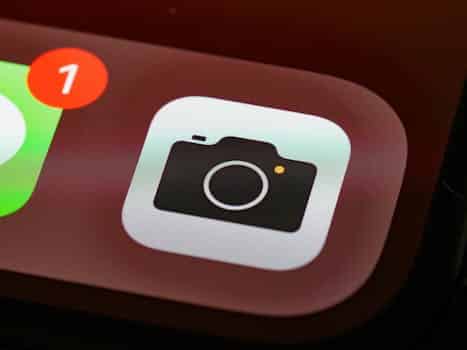The default camera app on Android is a crucial feature that many users rely on for capturing memorable moments. With its numerous features and settings, it provides a user-friendly experience that allows users to take high-quality pictures and videos. In this article, we will explore everything you need to know about the default camera app on Android, including its features, settings, and tips for taking better photos.
- 1. Introduction
- 1.1. What is the default camera app on Android?
- 1.2. Why is the default camera app important?
- 1.3. How does the default camera app work?
- 2. Features of the Default Camera App
- 2.1. Basic camera settings
- 2.2. HDR mode
- 2.3. Panorama mode
- 2.4. Night mode
- 2.5. Slow-motion video recording
- 3. Tips and Tricks for Using the Default Camera App
1. Introduction
The default camera app on Android is a crucial tool for capturing photos and videos on your device. It comes pre-installed on all Android devices and offers a range of features and settings to help you take high-quality pictures and videos. In this article, we will explore everything you need to know about the default camera app on Android, including its features, settings, and how to use it effectively to capture stunning photos and videos.
1.1. What is the default camera app on Android?
The default camera app on Android is the pre-installed camera application that comes with every Android device. This app is developed by Google and is available on all Android devices, regardless of the brand or model. It is designed to be a simple and easy-to-use camera app that can be used by anyone, whether they are a professional photographer or just someone who wants to take a quick snapshot. In this article, we will explore everything you need to know about the default camera app on Android, including its features, settings, and how to use it to take great photos.
1.2. Why is the default camera app important?
The default camera app on Android is often overlooked, as users tend to download third-party camera apps with more features and customization options. However, the default camera app plays a crucial role in the overall photography experience on an Android device. It is the go-to option for quick and easy access to the camera, allowing users to capture important moments without having to navigate through menus and settings. Additionally, the default camera app is optimized for the specific hardware and software of the device, ensuring that users get the best possible image quality. In this article, we will explore everything you need to know about the default camera app on Android and why it is an important part of the overall user experience.
1.3. How does the default camera app work?
The default camera app on Android is a tool that allows users to capture photos and videos using their mobile devices. It works by accessing the device’s camera hardware and software, which allows for the capture of high-quality images and videos. The app comes pre-installed on all Android devices and is designed to be user-friendly, with simple controls and intuitive navigation. In this article, we will explore the various features and capabilities of the default camera app, as well as how to use it to capture stunning photos and videos.
2. Features of the Default Camera App
The Default Camera App on Android comes with a range of features that make it a powerful tool for capturing photos and videos. Some of the key features of the app include a variety of shooting modes, such as panorama, slow-motion, and time-lapse. The app also offers different focus modes, including auto-focus and manual focus, which can help you capture sharp and clear images. Additionally, the app comes with various filters and effects that you can apply to your photos and videos to enhance their appearance. Overall, the Default Camera App offers a comprehensive set of features that allow you to capture high-quality photos and videos on your Android device.
2.1. Basic camera settings
Before taking any pictures with your Android device, it’s important to understand the basic camera settings. The three most important settings are focus, exposure, and white balance. Focus determines which parts of the image are sharp and in focus, while exposure controls how bright or dark the image is. White balance determines the color temperature of the image, so that whites appear white and colors appear as they should. These settings can be adjusted manually or set to automatic mode, depending on your preference and the lighting conditions you are shooting in.
2.2. HDR mode
HDR mode is a feature that enhances the quality of your photos by capturing multiple images of the same scene with different exposures. The camera app then combines these images to create a final photo with better contrast, color accuracy, and detail. This feature is especially useful when taking photos in high-contrast lighting situations, such as a bright sky against a dark landscape. The default camera app on Android has an HDR mode that can be easily accessed by tapping on the HDR icon located in the camera app’s interface.
2.3. Panorama mode
The default camera app on Android comes with a range of features to enhance your photography experience. One of the most useful features is the panorama mode, which allows you to capture a wider view of your surroundings in a single shot. This is particularly useful for landscape and cityscape photography, where you want to capture as much of the scene as possible. To use panorama mode, simply open the camera app, swipe left to access the modes, and select panorama. Then, follow the on-screen instructions to capture your panoramic shot. You can also adjust the direction of the panorama by swiping left or right as you capture the shot. Overall, the panorama mode in the default camera app is a great tool for capturing stunning wide-angle shots with ease.
2.4. Night mode
The default camera app on Android devices is a versatile tool for capturing photos and videos. One of its useful features is the night mode, which allows users to take clearer and brighter photos in low light conditions. With night mode, the camera app automatically adjusts the exposure, ISO, and shutter speed to produce a well-lit image. This is particularly helpful when taking photos indoors or outdoors at night, where lighting is limited. Night mode also reduces the amount of noise and grain in the image, resulting in a cleaner and sharper photo. Overall, the night mode feature of the default camera app is a great addition to any Android device and can help users take better photos in low light situations.
2.5. Slow-motion video recording
The default camera app on Android devices offers a variety of features, including the ability to record slow-motion videos. Slow-motion videos can be a great way to capture action shots or add a dramatic effect to your footage. When using the default camera app, simply swipe left on the camera screen to access the different recording modes. From there, select the slow-motion option and begin recording. Keep in mind that slow-motion videos require a lot of light, so it’s best to use this feature in well-lit environments. Once you’re done recording, you can edit the video to adjust the speed and length of the slow-motion effect. Overall, the slow-motion feature is just one of many useful tools available in the default camera app on Android.
3. Tips and Tricks for Using the Default Camera App
When it comes to using the default camera app on your Android device, there are a few tips and tricks that can help you take better photos. Firstly, make sure that your camera lens is clean and free from smudges or fingerprints. This will ensure that your photos are clear and sharp. Secondly, play around with the different shooting modes available in the app. For example, you can use the panorama mode to capture stunning landscape shots, or the HDR mode to capture more detail in high-contrast scenes. Lastly, don’t forget to utilize the grid lines in the app to help you frame your shots and ensure that your photos are level. By following these simple tips and tricks, you’ll be able to take better photos with the default camera app on your Android device.
3.1. Adjusting exposure and focus
Adjusting exposure and focus are two important aspects of photography that can greatly enhance the quality of your photos. In the default camera app on Android, you can adjust both of these settings by tapping on the screen where you want to focus and then dragging the exposure slider up or down to brighten or darken the image. This is especially useful when taking photos in challenging lighting situations, such as bright sunlight or low light conditions. By adjusting the exposure and focus, you can ensure that your photos are sharp, well-lit, and visually appealing.
3.2. Using gridlines for composition
Using gridlines for composition
Gridlines are a great tool to help you compose your shots in a more visually appealing way. The default camera app on Android has the option to turn on gridlines, which will display a 3×3 grid over your viewfinder. This grid can help you align your subject, create symmetry, and balance your composition. Simply go to the camera settings, find the option for gridlines, and turn it on. Experiment with different compositions and see how the gridlines can help you create more interesting photos.
3.3. Enabling burst mode
Enabling burst mode can be a useful feature when trying to capture fast-moving subjects or when you want to take multiple shots in quick succession. To enable burst mode on the default camera app for Android, open the app and tap on the settings icon. From there, scroll down to find the burst mode option and toggle it on. Once enabled, simply hold down the shutter button to take multiple shots in quick succession. This feature can help increase your chances of capturing the perfect shot, especially when dealing with unpredictable subjects.
3.4. Choosing the right resolution
Choosing the right resolution is an important aspect of capturing great photos with the default camera app on Android. The resolution determines the quality of the image and the size of the file. If you’re planning on sharing photos on social media or through messaging apps, a lower resolution may suffice. However, if you’re looking to print photos or use them for professional purposes, a higher resolution is recommended. Keep in mind that higher resolutions also mean larger file sizes, so make sure you have enough storage on your device. Experiment with different resolutions to find the one that works best for your needs.
3.5. Using third-party camera apps
Third-party camera apps can offer a range of features and customization options that may not be available on the default camera app. Some popular third-party camera apps include Camera FV-5, Open Camera, and ProShot. These apps allow users to adjust settings such as ISO, shutter speed, and white balance, and may also offer advanced features like manual focus and RAW image capture. However, it’s important to note that not all third-party camera apps are created equal, and some may not perform as well as the default camera app on certain devices. It’s always a good idea to read reviews and do some research before downloading and using a new camera app.
Conclusion
In conclusion, the default camera app on Android offers a variety of features and settings to enhance your photography experience. With a little exploration and experimentation, you can capture stunning photos and videos with ease.




